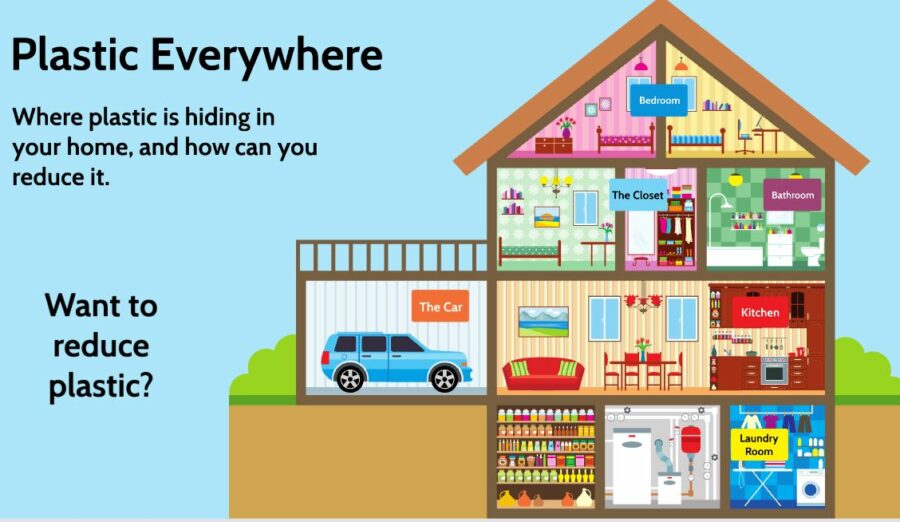Plastic is Everywhere

By Melanie Stewart
Plastics can be found in any room of your home. We often think of plastic as water bottles, packaging, or bags, but common household items that contain microplastics that travel through the air and via water ways and are detrimental to the environment. Microplastics have been found in the deepest parts of the ocean, the top of Mount Everest, and everywhere in between—the average American consumes between 39,000 and 52,000 pieces of plastic a year from our food and beverages.
Click through this interactive home to see where plastic can be found as well as alternatives.
To reduce your plastic use, check out your kitchen. When you go shopping, use reusable produce bags instead of the bags provided and bring your own reusable bags to carry out your groceries. Buy food that does not come in plastic packaging and buy in bulk, whenever possible. Opt for reusable plates, cups, and utensils—it saves you money, you’ll eat less plastic, and your dining experience will be better. Store your food in reusable metal, glass, or silicone containers, or cover with a beeswax wrap instead of plastic cling.
There’s a surprising amount of plastic in your bathroom—shampoo/conditioner and body wash bottles, make-up and hair products, OTC medication, toothbrushes and toothpaste…the list goes on. Some items are hard to replace, but there are swaps that can reduce plastic use. Bamboo toothbrushes and toothpaste tabs, bar shampoos and soaps, plastic free menstrual products, and there are companies that are reducing plastic packaging and/or moving to compostable options.
Clothing items that aren’t 100% cotton/linen/wool, etc. also contain plastic…commonly polyester. Alas your fleece top and favorite lounge wear are probably more plastic than anything else, and washing those items puts plastics that are too small to be captured by treatment plant filters right into our waterways. Wash your clothes in homemade laundry detergent (LiveGreen tested recipe here), or with detergent that comes in a box or a biodegradable container.
Plastic is found in fabrics and textiles in our bedrooms and living spaces too. Most rugs, curtains, and carpets are made from synthetic materials which have their own health risks because of the chemicals used in them. Look for items that are sustainably sourced and are made of wood, cotton, bamboo, or wool, with Volatile Organic Compound (VOC) free finishes. Or consider antique and vintage items as they are less likely to contain plastic.
